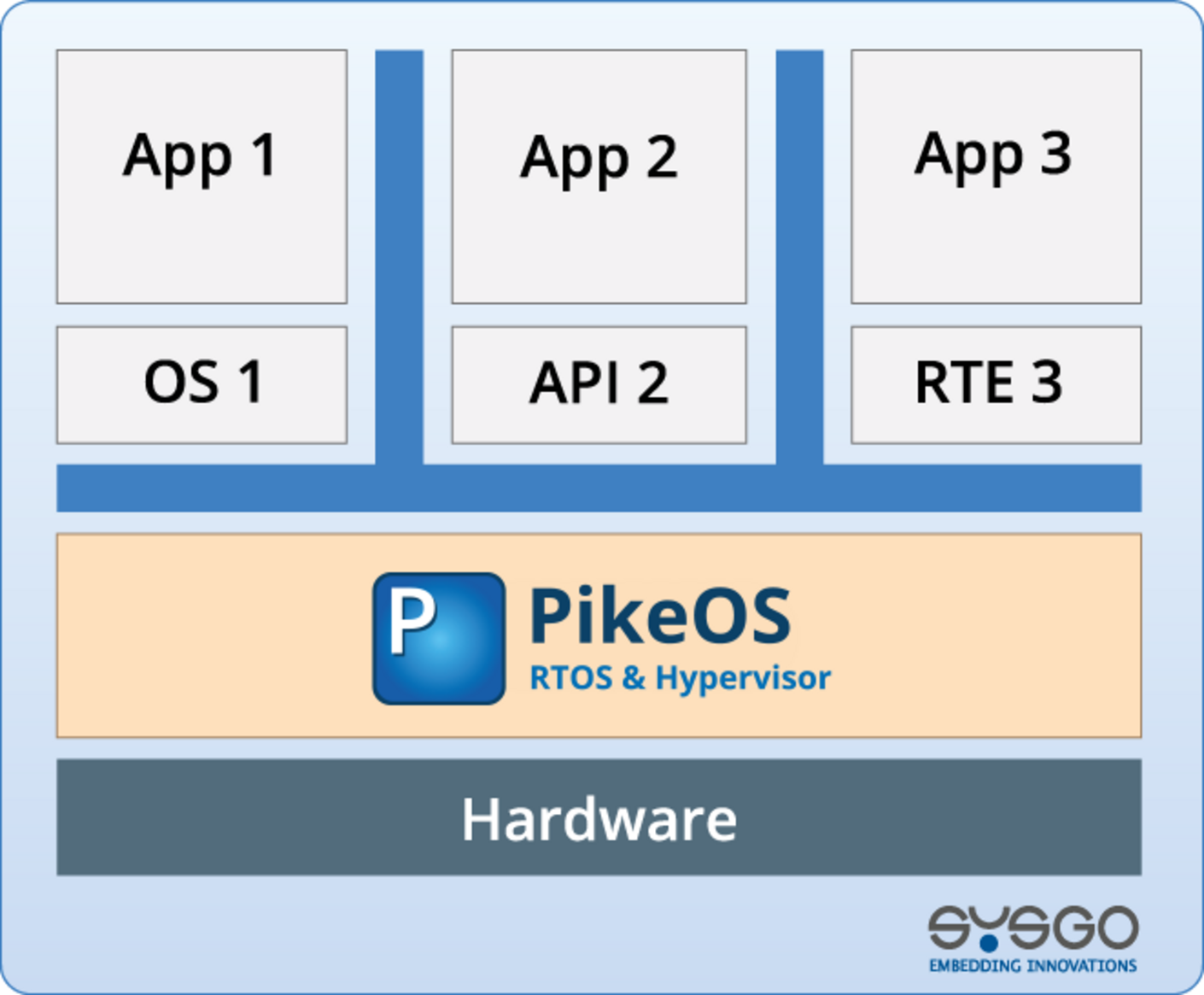Pre-certified for the highest Safety Levels
PikeOS is pre-certified up to DAL A, SIL 4, or ASIL D, and other industry-specific standards — reducing your certification workload and accelerating time-to-market
Designed for Future Certification Needs
Our roadmap aligns with the latest Safety and Security regulations, ensuring long-term investment protection.
Certified Building Blocks ready to use
Access pre-certified components like CIP, CFS, and CML to simplify and shorten system certification processes
Strong ties to Certification Authorities
We collaborate directly with TÜV, BSI (Federal Cyber Security Authority), and other authorities — giving you a smoother path through audits and approvals
Deep Certification Expertise in-house
80% of SYSGO engineers have hands-on experience in Safety-critical certification projects
Certification Kits for fast Integration
Whether you're certifying a platform, adapting a BSP (Board Support Package), or preparing for audits, we offer tailored Certification Kits to support your process.
Proactive Safety Communication
Stay informed with Safety Bulletins covering vulnerabilities and mitigations relevant to your system
Built for Mixed-Criticality Systems
PikeOS supports mixed-criticality applications on a single platform — saving cost while meeting Safety demands
Minimal Trusted Codebase
Our architecture minimizes the trusted computing base, simplifying validation and reducing certification risk



